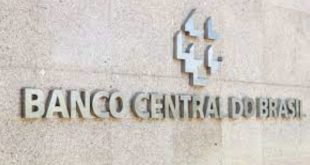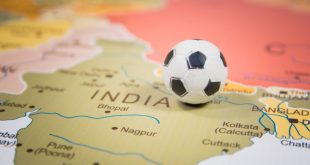Growing up, I’d hazard a guess that Michael Chopra never thought he’d be one day be telling the press of his wishes to follow in the footsteps of Sachin Tendulkar.
The former England U-21 striker recently signed for the Kerala Blasters, and will participate in the inaugural Indian Super League (ISL) which commences in October. Discussing his move he stated: “I want to be part of the legend of Sachin Tendulkar”.
“Everyone knows him because of how well he’s done in cricket and hopefully I can follow in his footsteps in football,” he continued. Tendulkar is part-owner of the Blasters, one of eight teams in the new league, officially known as the Hero Indian Super League due to a sponsorship arrangement. It will feature alongside the I-League as one of the two top leagues in Indian football. It was formulated with the intention of making football a major sport in India, a country in which cricket has long reigned supreme.
The Pepsi Indian Premier League (IPL) is a Twenty20 cricket league in which franchise teams compete for the title. In 2014 the value of the brand was estimated at around £1.9bn, despite it being only its seventh season. The same firm which offered this valuation, American Appraisal, also noted that they believe this figure has the potential to explode and reach a value of £243bn by 2020, in what would be a fitting year for the league to achieve such success. To add some emphasis to what these figures mean; the Barclays Premier League was valued at close to £2.5bn in 2012.
There have been attempts in the recent past to create such a league as the ISL. In 2011 the Bengal Premier League Soccer League was planned to commence in 2012, with names including Pires, Cannavaro, Fowler and Crespo set to feature. This was delayed and eventually scrapped due to financial issues.
This time around however things are different. The ISL is extremely well organised, there are wealthy, reputable financial backers and companies involved who will do their utmost to ensure its success. Discussing his belief in the potential of the sport in India Chopra noted; “I think it will be similar to the Indian Premier League in cricket and may be in a year or two up there with it,” he said. “There’s 1.3 billion people in India and if we can get football up and running to how the cricket is, it’ll be massive.” One or two years may be somewhat hopeful, but Chopra is one of many riding on the tidal wave of belief in the potential of the ISL in India.
Chopra, whose father is Indian, is thus eligible to play for national side and he intends to do so, should the AIFF allow him to. The rules in India however do not allow dual citizenship and so, in a true showing of commitment, Chopra will be giving up his British passport. He has also stated his plans to remain in India after the initial Super League campaign and participate in the I-League.
The level of optimism held by the likes of Chopra is perhaps somewhat justified upon investigation into the prices paid for the initial franchises. The winning bidders paid in the region of $25m (£15.3m) for a 10-year contract for each of the eight teams; meaning the league grand total stood at around $200m (£122m).
(A crore rupee crore, is 10 million rupees which is just over £100,000)
It’s also interesting to note there were 18 bidders for the initial ISL sides, compared with 11 bidders for the initial IPL sides, though the values placed on the cricket franchises were higher.
The Format
The ISL will take the same format as the IPL and the MLS in the States, in that promotion and relegation will not be a feature. Instead it will take on a franchise system, with teams created to participate in the league.
The league has been organised in such a way that it not only aims to create a buzz around the sport in the country, but also nurture home grown talent from the very beginning. Each team must have a squad of at least 22 players, of which there will be one marquee player, seven internationals and fourteen Indian players. Of the seven foreign players, two may be signed by the club directly whilst the remaining five must come via the foreign player draft. The fourteen domestic players meanwhile must include four local players.
It will run from October to November, with teams playing each other twice, home and away. The finals will then be played in November and December and will feature the top four teams in the league. The semi-finals will be decided over two legs, with the final played on December 20th.
It all kicks off on October 12th.












